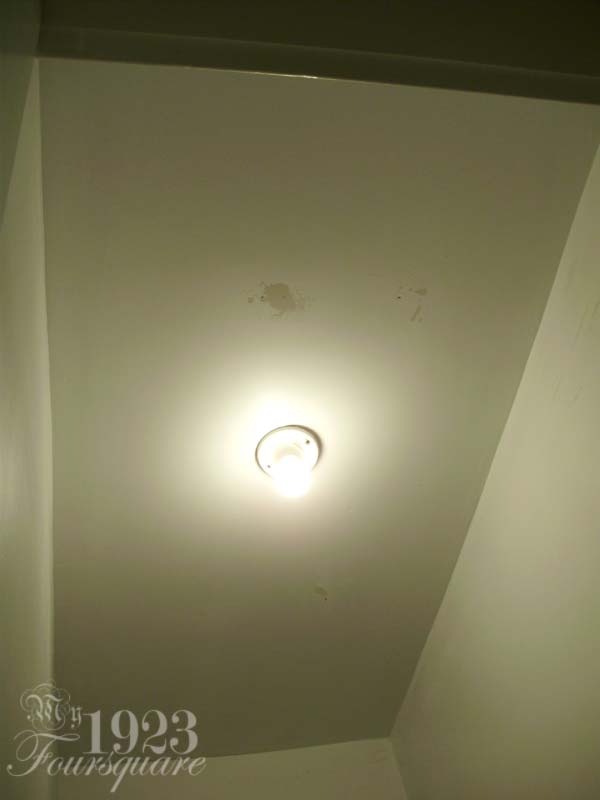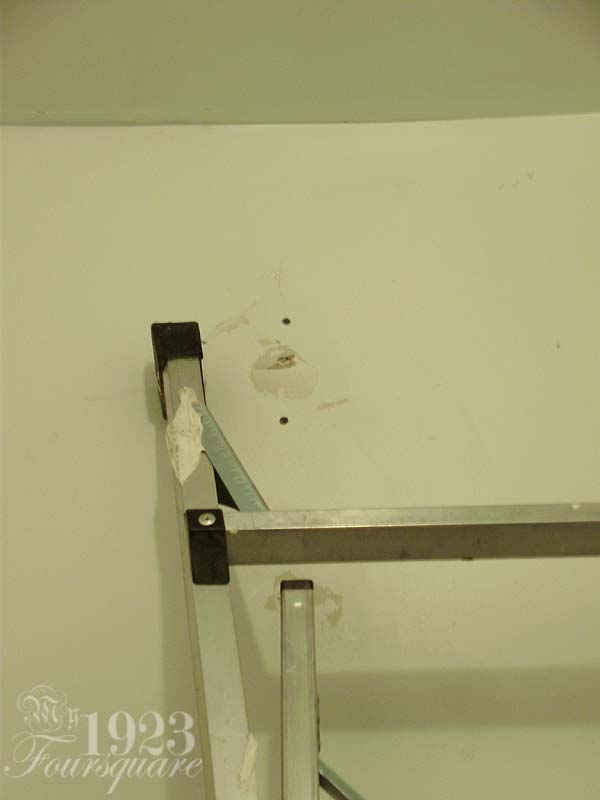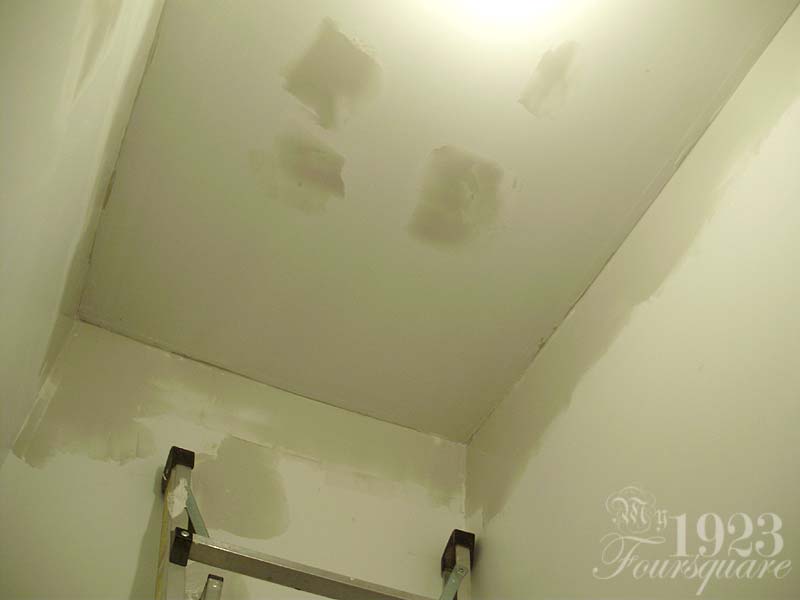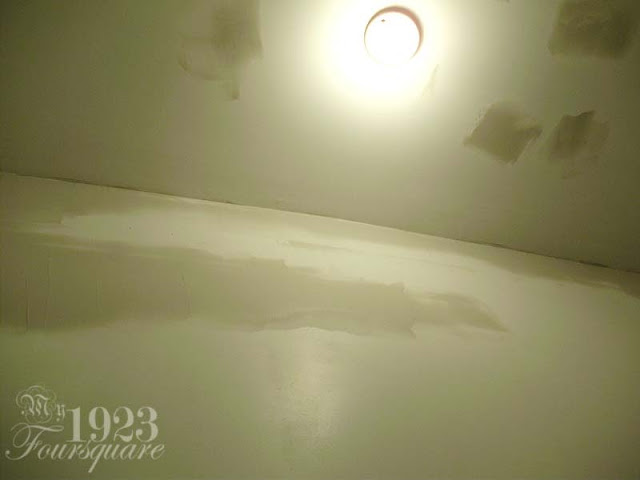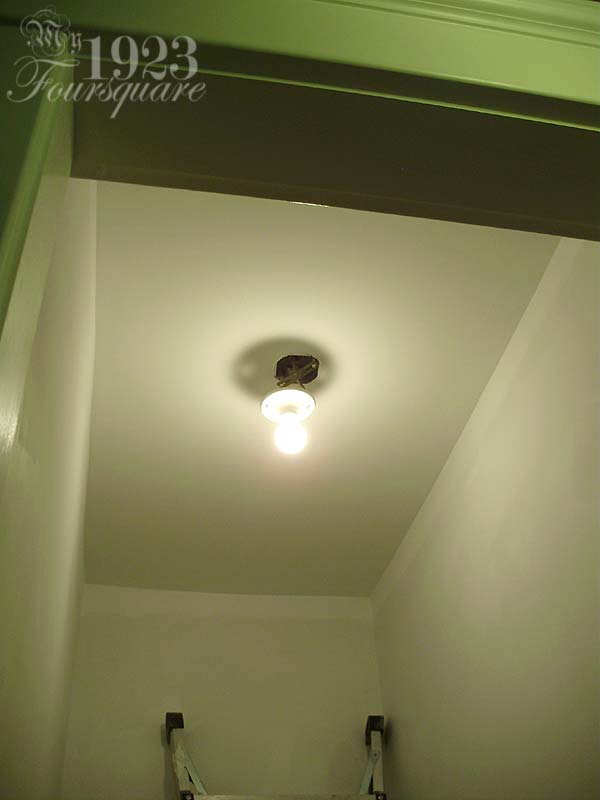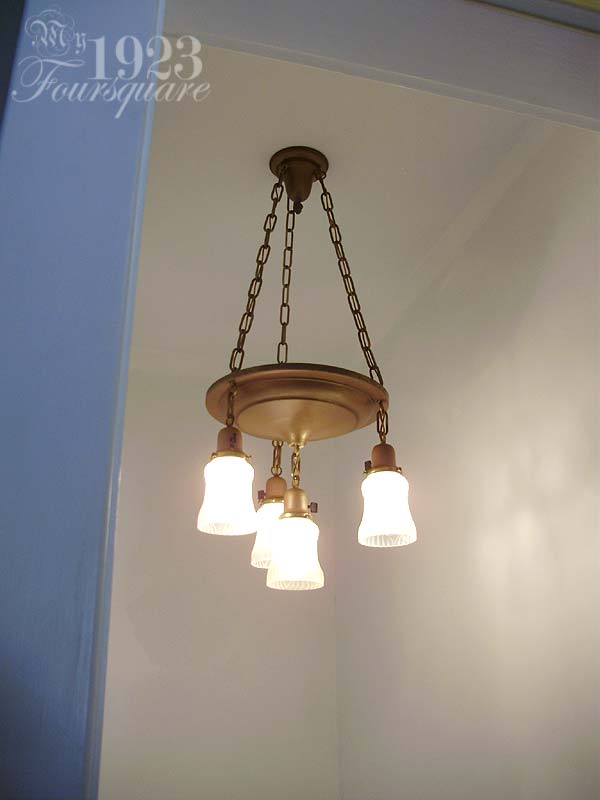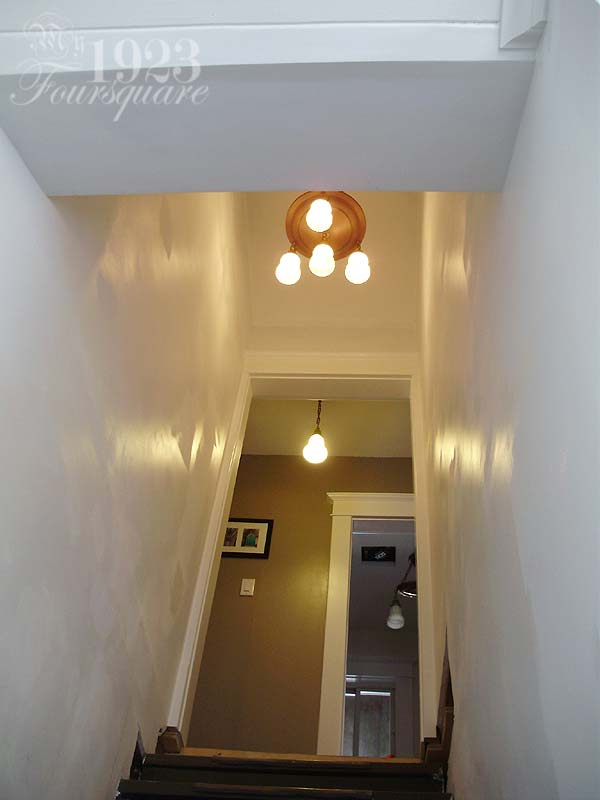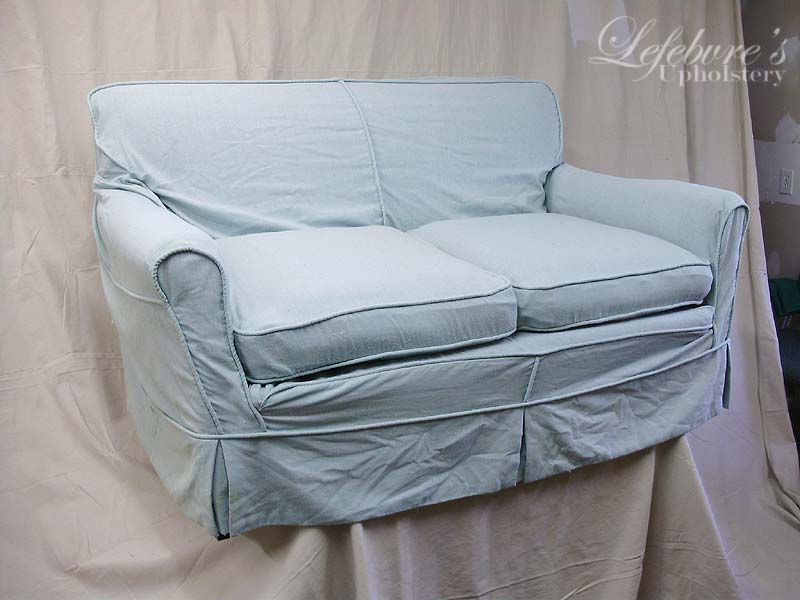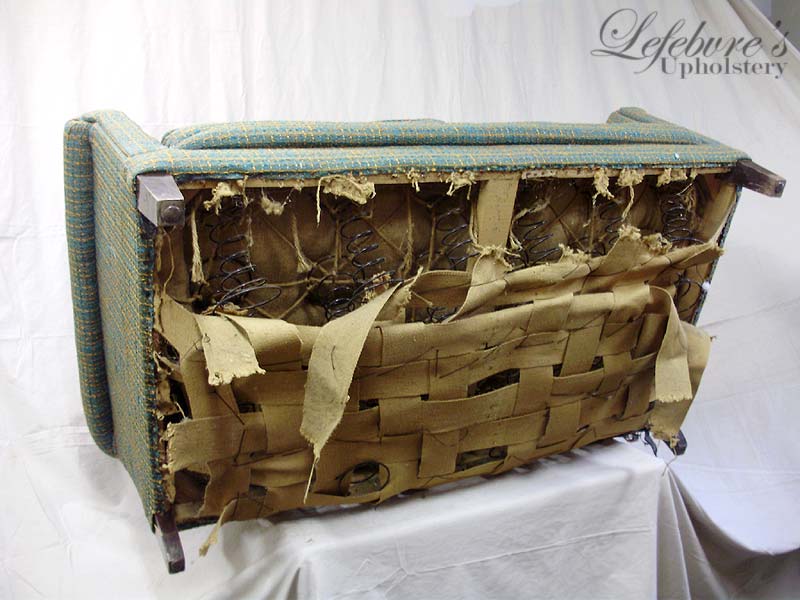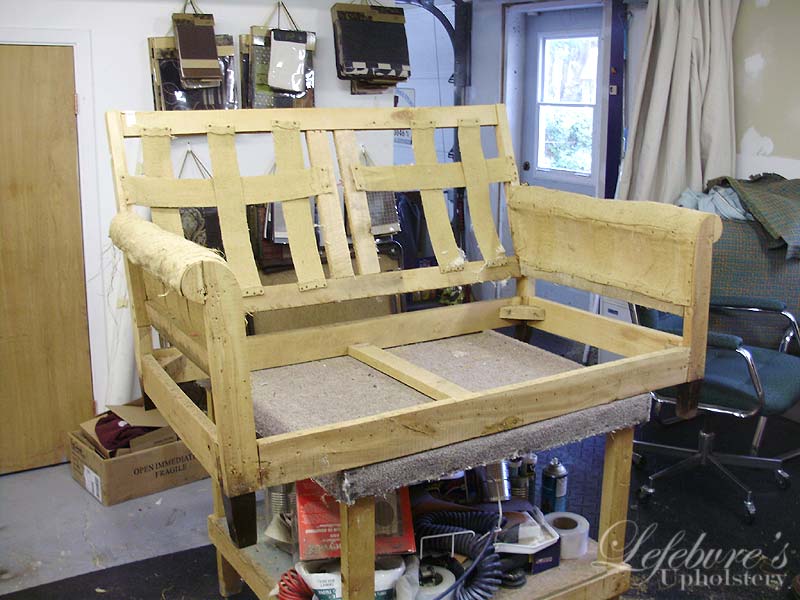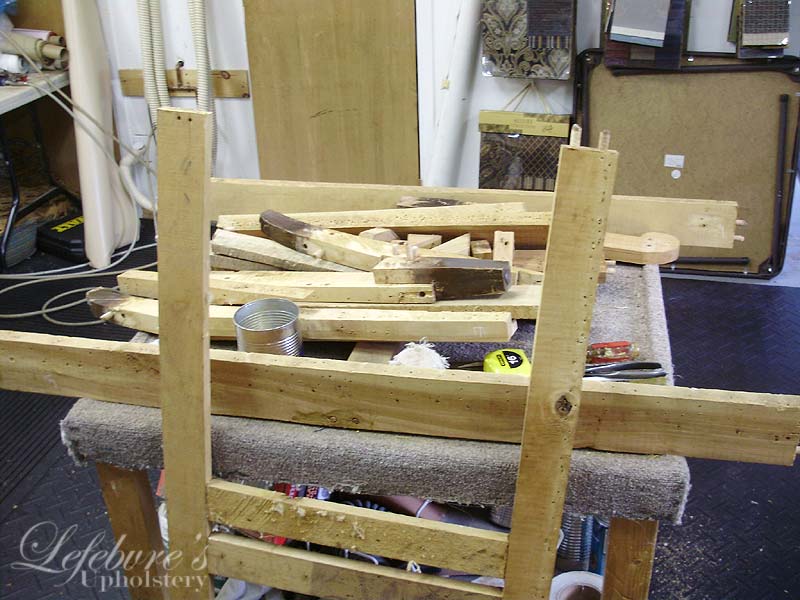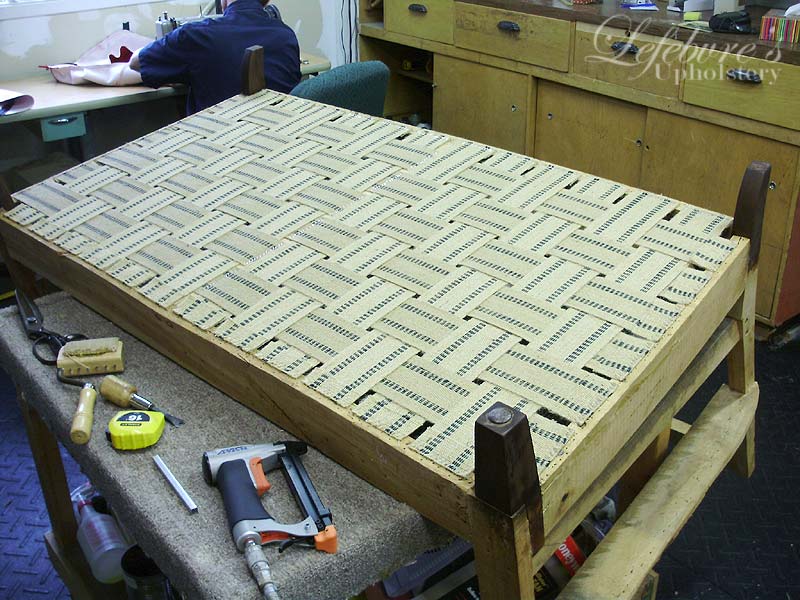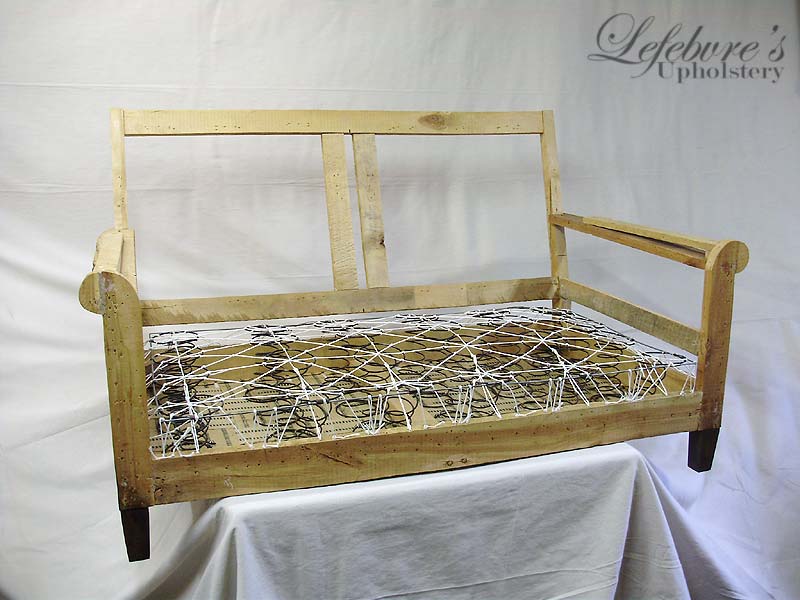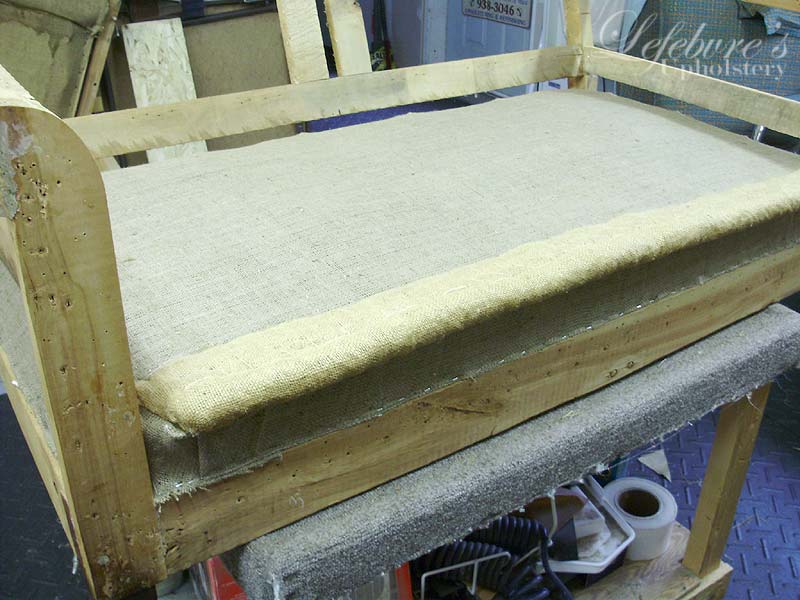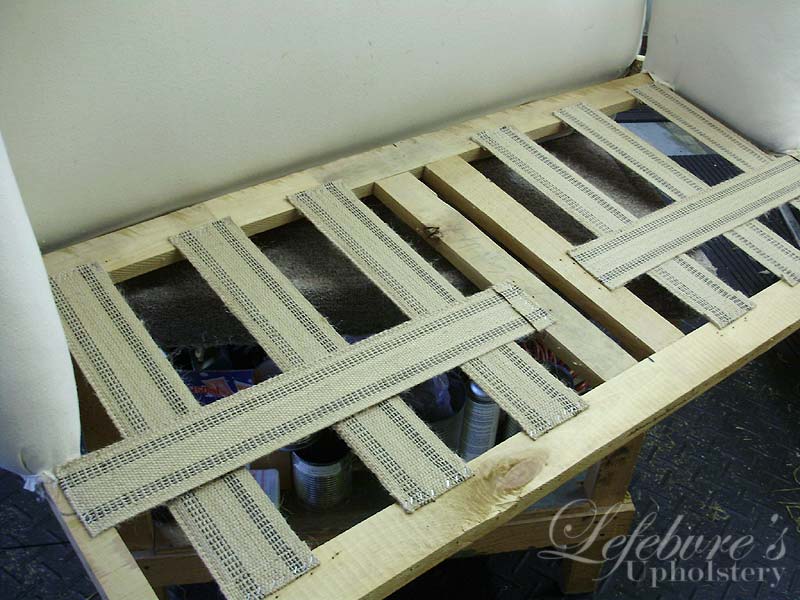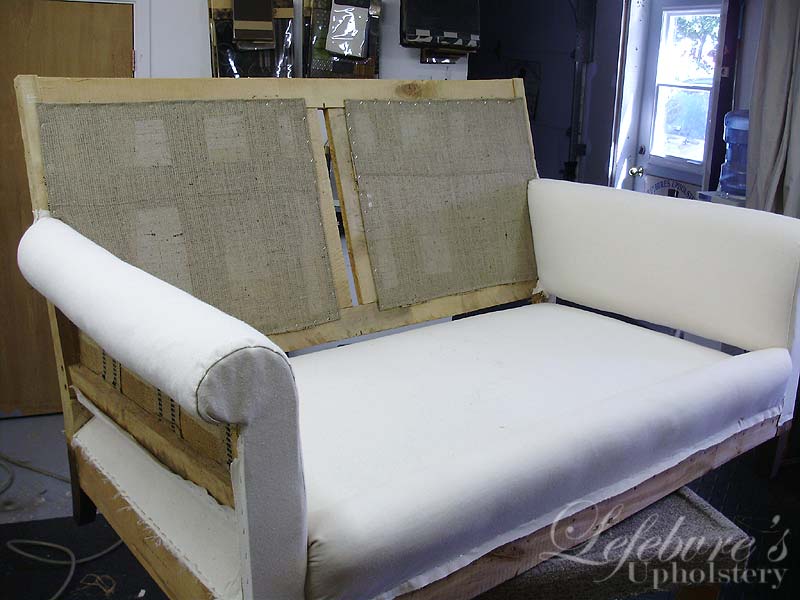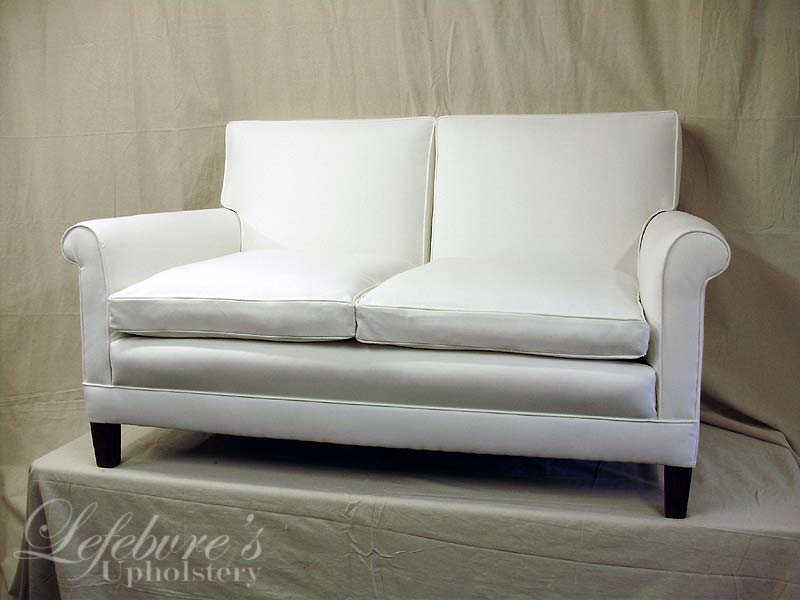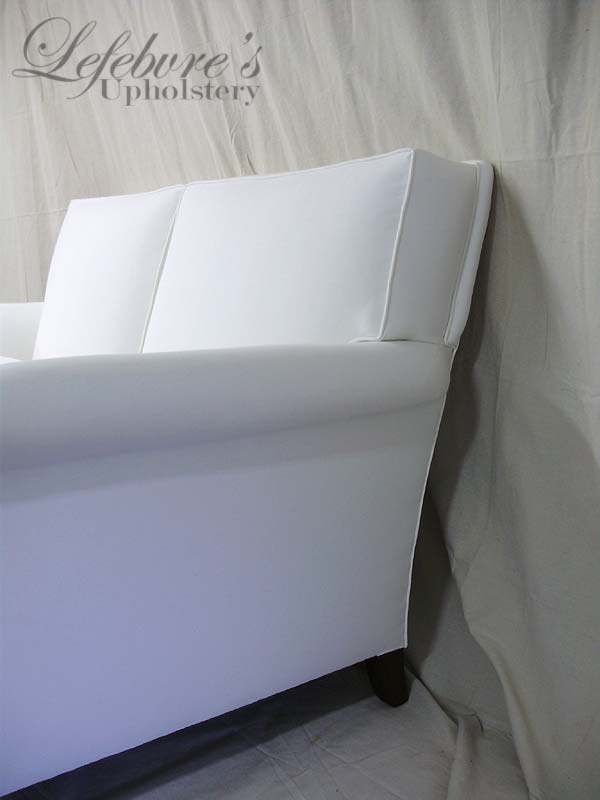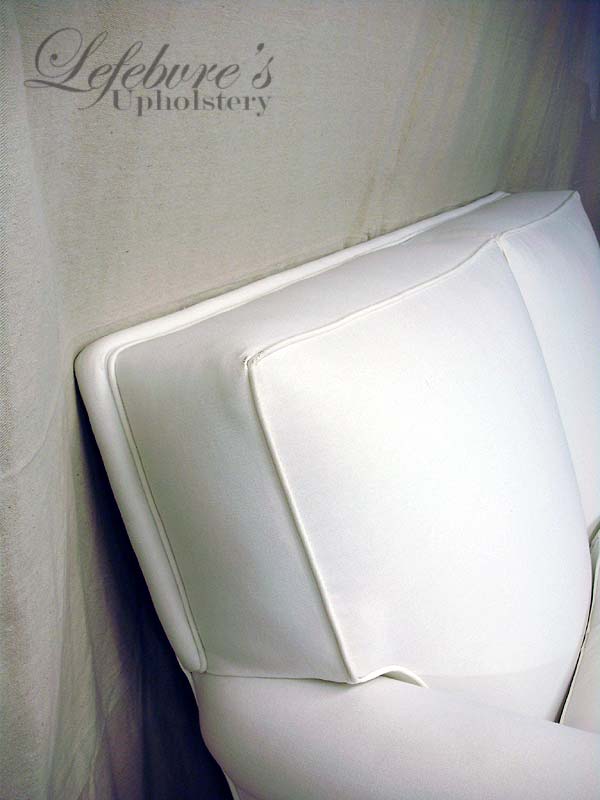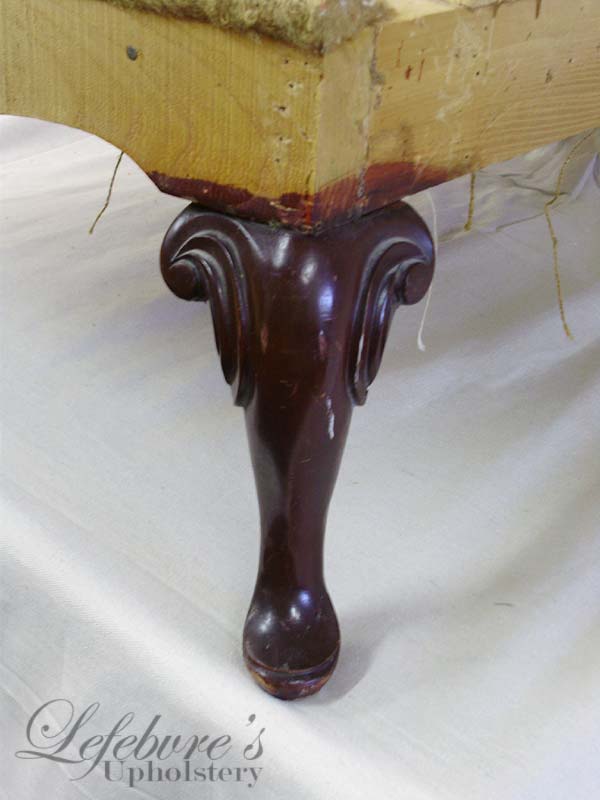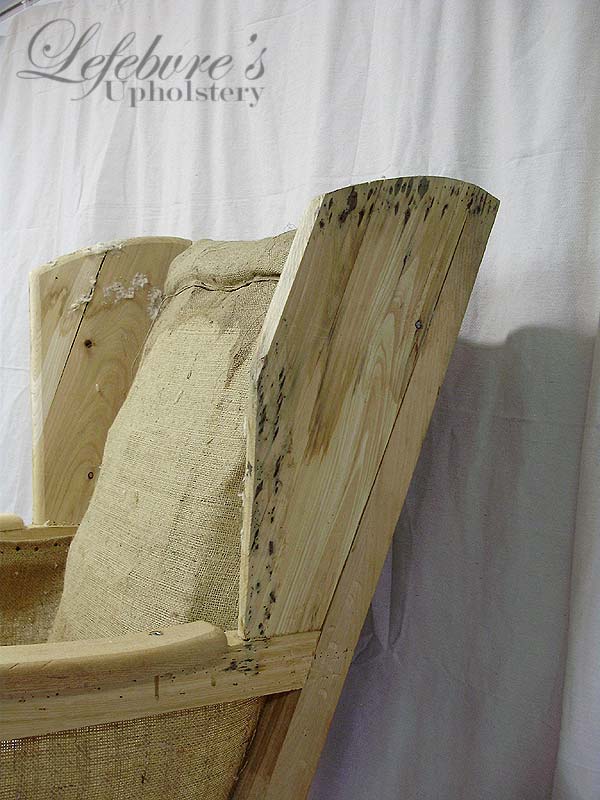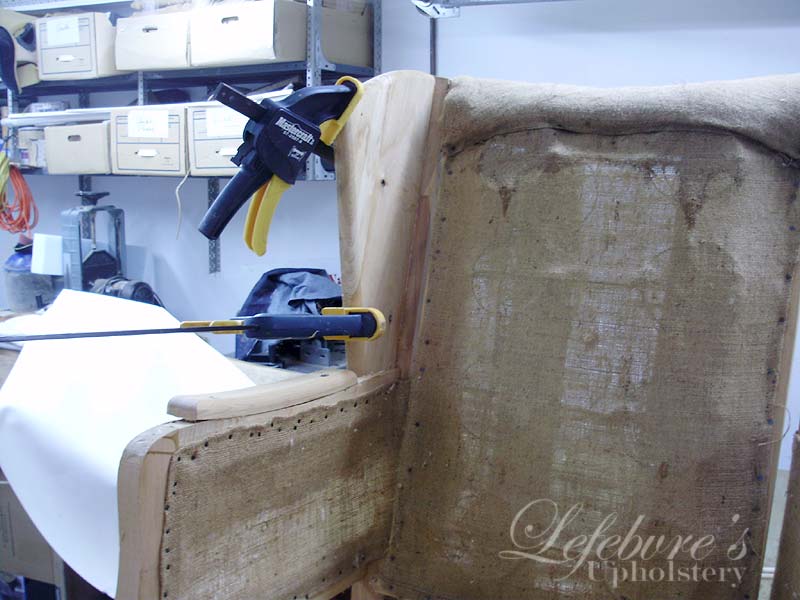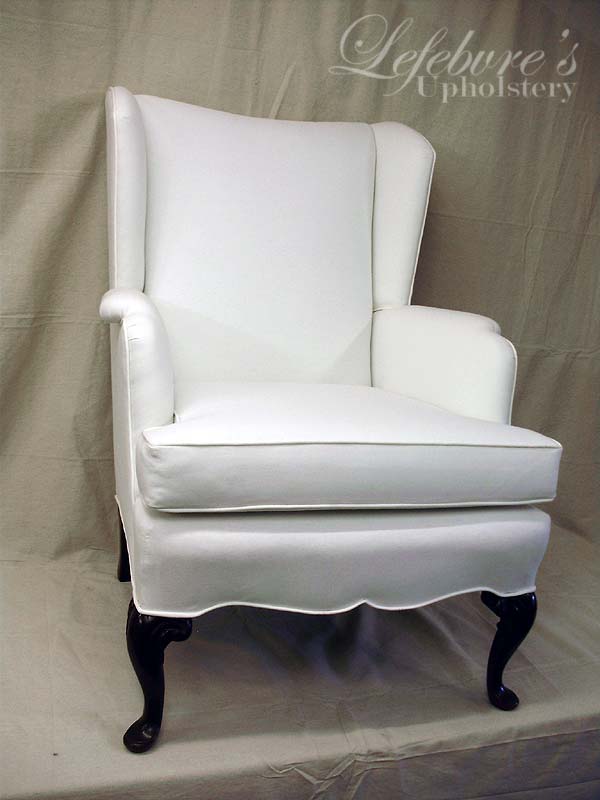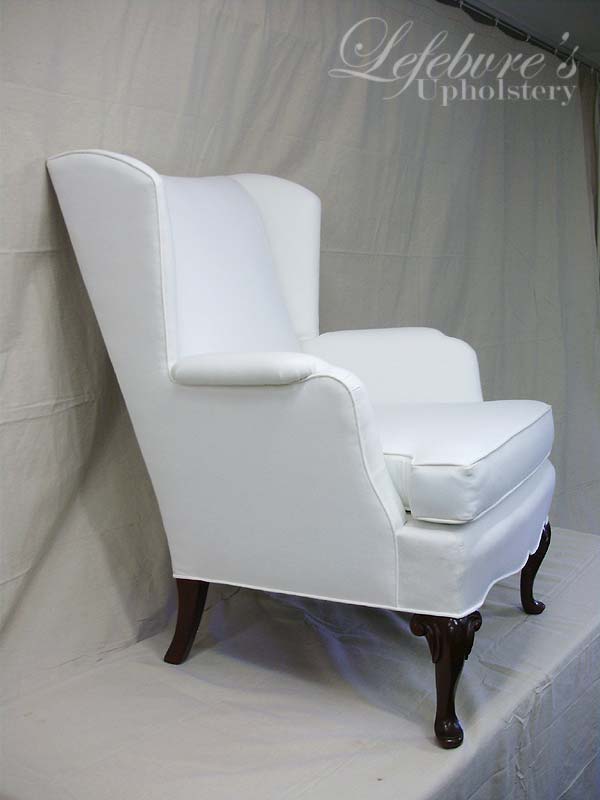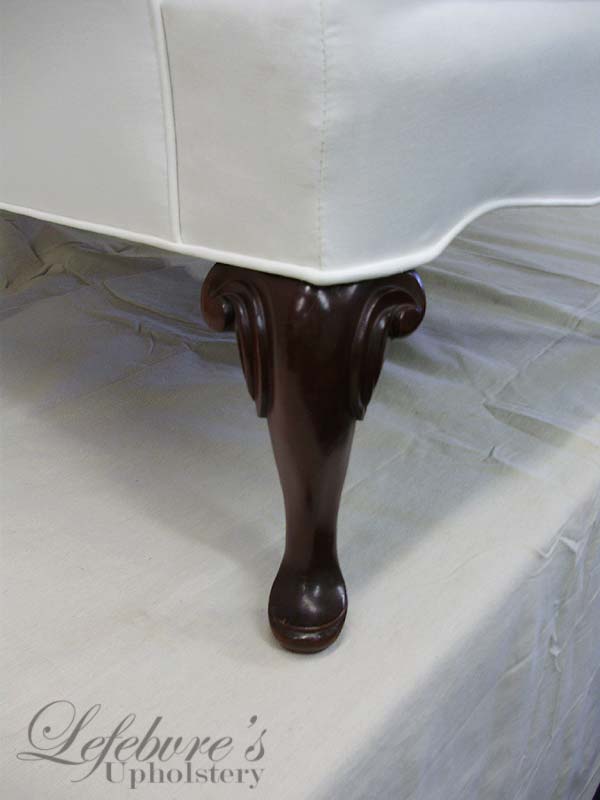Upholstery News:
First, I started a new blog for all the upholstery. There's just too many interesting and beautiful pieces that we've been working on, and I don't want to flood my "old house blog" with all the upholstery photos, so that's all being moved to the new blog "Lefebvre's Upholstery". That blog will be updated frequently with some of the better/bigger projects we're working on (we don't bother to post, or even photograph, the more mundane items like vinyl boat seats and chair repairs). I hope all of you who find upholstery to be fascinating, or who just love to see some rather dramatic "before and After" photos will enjoy following that blog. You can find it here:
Lefebvre's Upholstery Blog
I currently have 54 new upholstery photos that will be posted shortly, plus the reposts of the ones I already showed on this blog. If there isn't anything up on the blog yet, just be patient with me, and check back tomorrow.
Foursquare News:
I bought some furniture!
Well, that's a bit of an understatement since I walked away with 14 pieces of furniture, consisting of an entire matched 12 piece dining room set in mahogany, plus two freebies: a leather top (mahogany) coffee table, and an upholstered (beaten-up and falling apart) Eastlake style Victorian chair.
I saw the set advertised locally through Kijiji, and it only had 4 small photos, with a 500$ asking price. I could see one of the chairs poking out from the edge of a photo, and the table with 8 chairs seemed worth the asking price on their own. The set also came with a glass-door china hutch, a large sideboard, and another cabinet.
I contacted the seller (who was conveniently 2 blocks away on 4th street - note: I'm on 5th), and made plans to have a look at the set on Thursday night. I was very excited when I saw it, and that's when the owner also offered me the coffee table and Victorian chair "free if you want them". He also said he could deliver it (SWEET!!!)
I wanted to post about it on Thursday night or Friday, but I didn't want to jinx anything and I waited until today.
I spent all morning and part of Friday cleaning up all the clutter and junk around the house and in the garage to make the place look half decent, and to clear some room. This morning I moved my old chairs to the basement, and dismantled the crappy old table I had.
Dining Room ready for the new arrivals!
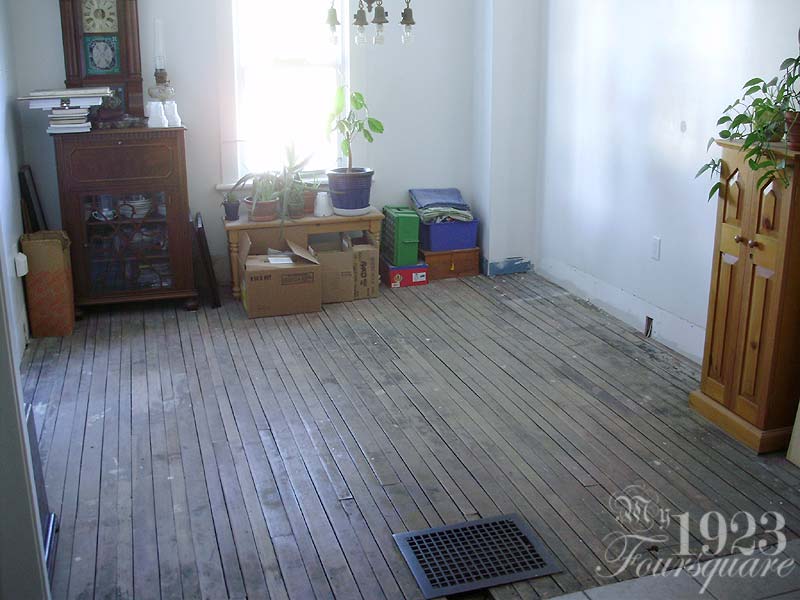
The chairs (before taking them inside from the garage):

Ta-Dah!
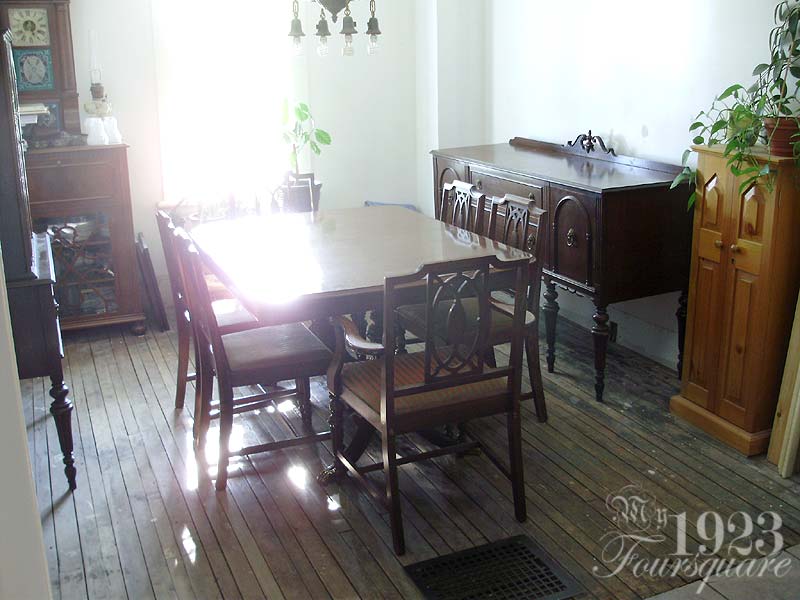
Hutch:

I started to really look over the set, and I noticed quite a few nice details. One of the signs of a high-end set is that the back legs on the larger pieces (sideboard, hutch, etc) are carved/turned. Many of the more basic sets usually have plain back legs.
Next, the drawers. Wow. Not only are they well made, but this is the first time I've seen internal drawers that are made with 1/4 sawn White Oak. For those who don't know, quarter sawn lumber is when the wood is cut radially through the tree (think pie wedges). This means that the grain running through the board is running perpendicular to the board (stripes as opposed to curved lines when you look at the end of a board). This causes a lot of waste, but the wood is more stable, less likely to warp, and it's also the only way to see those beautiful "tiger stripes" that are present in all pieces of Oak. Regular "flat sawn" wood will have shallow curves in the wood grain, and they're more likely to cup/warp, but it's much cheaper and easier to do. Almost all the solid wood furniture you'll see today is flat sawn.

Then there's the dovetails. Most people know that dovetails are good, and a lot of older stuff will have them (machine cut or hand cut are equally good). These drawers not only have dovetails at the front...

But also at the back! This is something that you will RARELY see. NONE of my other antiques have this with the exception of my little mahogany night stand (which has just one drawer).
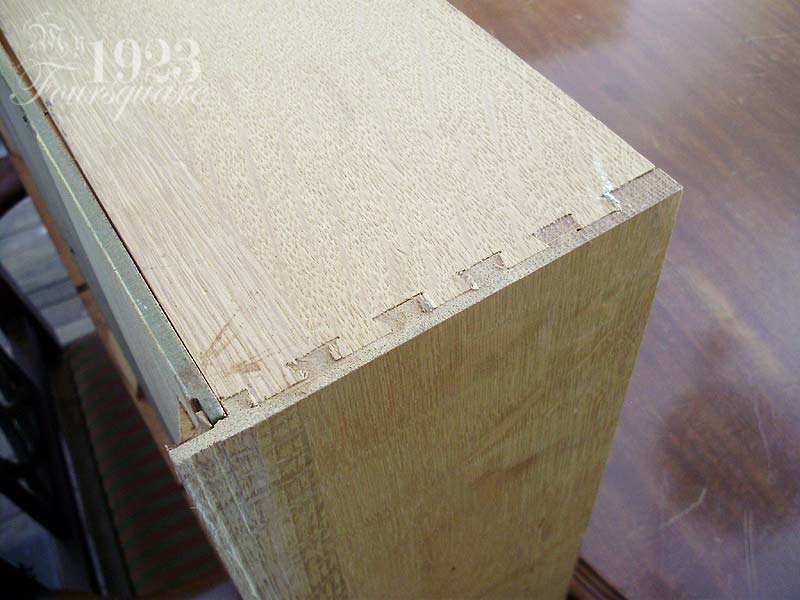
When I had first seen the set I thought it was all Walnut (which is very typical for this style of 1920s set) but when I looked at it in the light, I could see that it's mahogany. All of the legs and mouldings are solid mahogany, and the sides/tops are mahogany veneer.
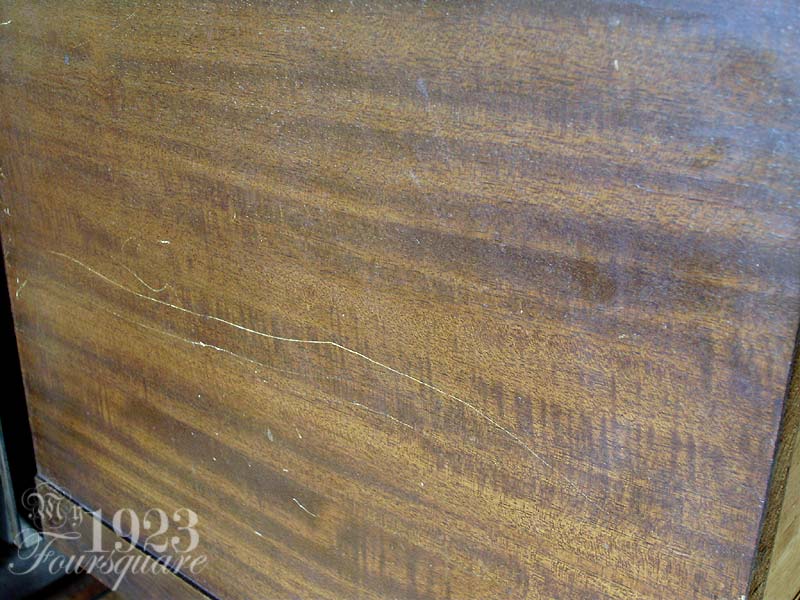
With all these signs of quality, I was incredibly surprised to find that there were absolutely NO markings on the pieces except for pencilled numbers. Some of the chairs are numbered "9310" and the smaller cabinet is numbered "9312".

From what I can tell, it says "9312 Bottom" "Nov 5 1945" "RossKerr" and something along the lines of: "Like is nany Chuck" (?) These were the only markings I could find.


I had thought that the pink and gold-green fabric on the seats was original, but one of the torn ones proved otherwise.
The fabric is actually dark pinkish red, with the green added afterwards. In some of the excessively worn-out places, the bright pink shows through a lot. The green stripes almost look like ribbons. It's quite an interesting/nice fabric and it goes well with the set.


Here's that other piece. I don't have room for this one, so it will be used in another room.

Now, my final thoughts on the set: It's kind of big. I was surprised how much space the table takes up with the chairs. I will have to rearrange the pieces, because currently the sideboard is so deep on that side that I can't even open a drawer half way, or pull-out a chair properly. The table is off-centre from the room by 4" (because the window and light fixture are 4" off) so it might work better on the opposite side (since I'll gain that 4"). Worst case scenario is that I have to "get rid of" (move to another room) the sideboard. I don't really understand why it's so deep in the first place. It's about 21" deep, while the hutch is only 17" deep.
Then there's the freebies. The chair has definitely seen better days.
The fabrics don't even match, and the upholstery job on the seat is just terrible. Look at all the creases and bunching on the right corner, and on the back left side.



Pierre tells me that the greenish gold velvet isn't original because it's textured velvet.
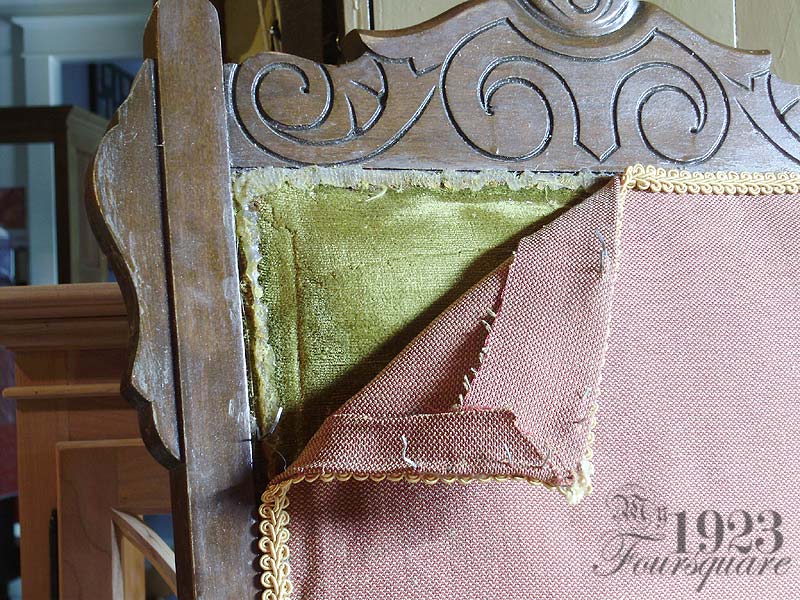
Note the crack in the stretcher below. The whole chair is rickety and falling apart. The finish isn't the best either, but it has potential to be really nice. The casters have brass wheels.

The coffee table. This one I'm not too fussy about, but I love the cute little casters with the square tips. The table looks like solid mahogany (no veneers), and the top might be leather. It looks and feels like it's fake, but there's a deep gouge in it at one end, and it seems fuzzy, so it could be real leather.
Note broken corner moulding.
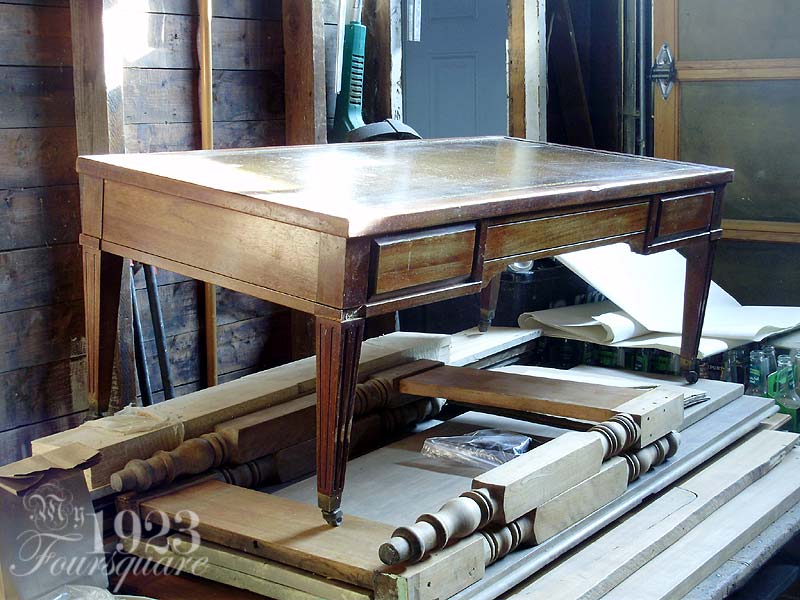
The finish on it is in horrible shape (both the wood, and the thick varnish coating over the leather).
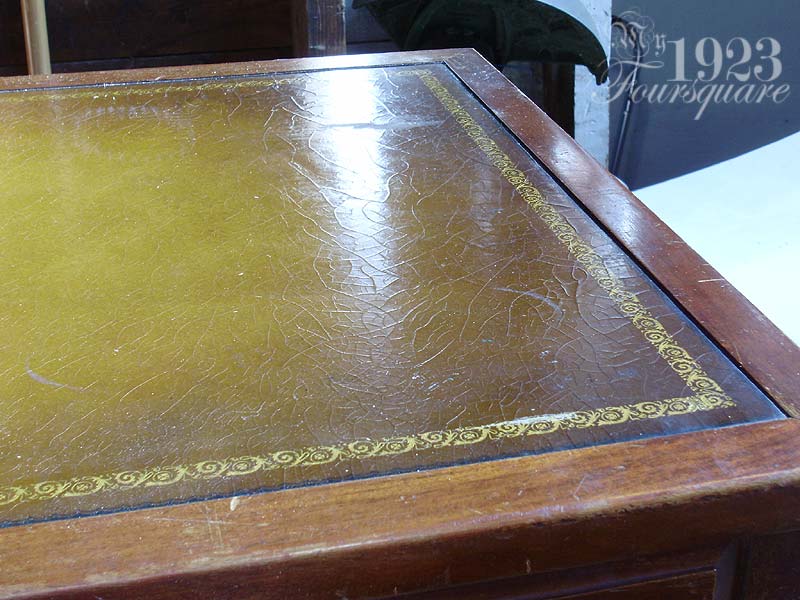
That's it for now, but I also had some houses/buildings I'll be posting soon.



